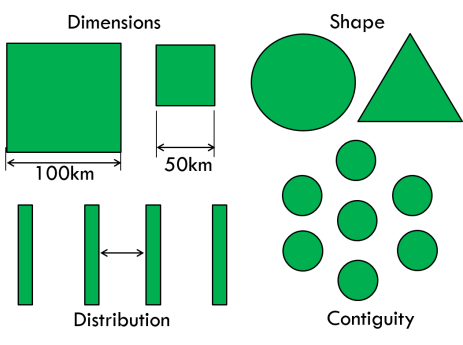Research Component II (RCII): Sustainable land-cover and terrain modifications to enhance convection and precipitation
The second component of our research program has the following objectives:
OII.1: Studying the effect of land cover and terrain modifications over the UAE to localize and amplify convergence zones and CI
OII.2: Assessing the feasibility of land-cover and terrain modification schemes along with optimal design and placement in the UAE
These objectives are based on the following hypotheses:
HII.1: Large-scale plantations and/or augmented terrain features can amplify local convective processes under certain conditions
HII.2: Land surface modification could be a sustainable and feasible method of modifying local weather, reclaiming marginal land, and boosting the economy
HII.1 is based on demonstrated weather impacts over large plantations in arid- and semi-arid regions and case studies of the impact of terrain modification on mesoscale circulations. Much needs to be done to advance our understanding of convective impacts, and their maximization. Our very high resolution simulations will provide detailed insights into impacts on convection from vegetation or terrain modification. Critically, we must identify necessary/optimal environmental conditions to trigger convection. By doing so we can optimize the design and placement of land modification schemes in the UAE.
On HII.2: Multidisciplinary studies carried out at the IPM on the potential of large arid plantations demonstrated increasing feasibility of such schemes based on: environmental impacts, irrigation technologies and requirements, desalination/urban wastewater resources, carbon sequestration potential, crop biofuel revenues, and so on. Given the unique characteristics of any given region, these promising assessments can be adapted to investigate vegetation or terrain modification scenarios in the UAE.
The second research component of our project will investigate firstly whether large plantations will amplify convergence zones and whether feasible enlargements of terrain features such as sand dunes or hills have an impact on convective processes. We have already demonstrated that in conditionally unstable conditions, desert plantations can trigger significant convergence and initiate or amplify convection and precipitation (see Fig.5). This is due to increased differential heating and roughness by suitable plantations leading to an increase of wind convergence as well as buoyant and mechanical turbulence.
A critical plantation size is important along with moderately low winds, advected surface moisture, high radiation and high upper air lapse rates. At the surface, a low canopy albedo/high desert soil albedo is required, along with high water use efficiency, minimal drip irrigation, and low transpiration. Hence great care was taken in our previous simulations to mimic vegetation characteristics, sub surface irrigation, and local soil properties.
We will simulate plantations in the UAE based on the physics and domain configuration derived in WP RCIb2 down to »900 m (see Fig.3 with potential locations of plantations). Canopy-convergence impacts will be investigated with the aim of identifying ideal locations and optimal plantation designs (Fig.5, bottom panel) to intensify the canopy effect. We expect that optimal locations exist where pre-existing moisture convergence occurs frequently, e.g., in coastal areas with strong land-sea breezes or in the Al Hajar Mountains. Such conditions would provide a conducive environment for convection to be initiated by plantations. At the same time, if areas of convergence become more or less stationary over large plantations, then this would also provide more reliable targeting zones for cloud seeding.


Fig.5: Upper panel: Simulated impact of coastal plantation in Oman on mean wind convergence, leading to summer precipitation enhancement over 38 days (units given in mm). Bottom panel: Investigation of optimal design, orientation and location of plantations within UAE (e.g. Al Hajar mountains Al Gharbia) to maximize enhancement.
If the region is climatically and environmentally suitable for impacts similarly to Oman, then land surface modification could provide a sustainable means to enhance rainfall and augment ongoing land reclamation efforts.
